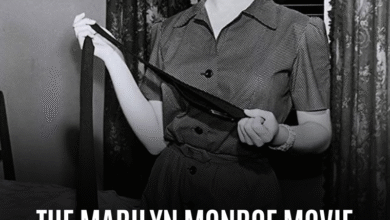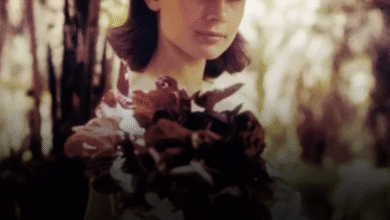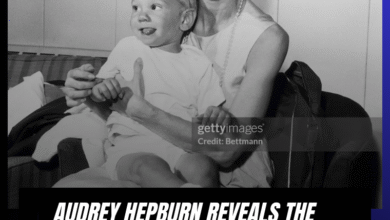The Untold Story Behind Audrey Hepburn’s Radiant Smile: More Than Just a Pretty Face
OPINION: This article may contain commentary which reflects the author's opinion.
Audrey Hepburn’s smile is one of the most iconic features of her public persona, a symbol of elegance, innocence, and charm that has endured through the decades. Her radiant smile captivated audiences both on-screen and off, helping to define an era while leaving a lasting cultural impact that continues to resonate today. This analysis delves into the significance of Hepburn’s smile, examining its role in her career, fashion influence, emotional depth, and humanitarian work.
Early Life and Career Beginnings
Born on May 4, 1929, in Brussels, Belgium, Audrey Hepburn’s early life was shaped by her aristocratic lineage and her experiences during World War II in the Netherlands. Hepburn’s grace and poise were honed through her training in ballet and early stage performances, which would later contribute to the effortless elegance she exuded in her film career.
Hepburn’s breakthrough came with her role as Princess Ann in Roman Holiday (1953), a performance that garnered her an Academy Award for Best Actress. Critics noted that her smile was central to the role, with The New York Times describing her as a “pitifully lonely figure facing a stuffy future” yet maintaining a “brave smile” that conveyed both vulnerability and hope. This film marked the beginning of her association with a smile that captured the hearts of millions—one that blended regal poise with childlike joy.
Her smile became a reflection of her resilience and elegance, something the post-war audience resonated with deeply. It offered a sense of optimism and sophistication during a time when the world was looking for healing and hope.
Iconic Smile: A Symbol of New Femininity
Audrey Hepburn’s smile was not only an emblem of beauty but also a defining characteristic of a new kind of femininity in cinema. In contrast to the more voluptuous allure of contemporaries like Marilyn Monroe and Brigitte Bardot, Hepburn’s smile and persona represented a shift toward a less aggressive, more androgynous, and innocent femininity. An article from WELT on her 80th birthday highlighted how her smile “enchanted the world with charm, elegance, and grace,” making her an enduring icon of sophistication and class.
In films like Breakfast at Tiffany’s (1961) and My Fair Lady (1964), Hepburn’s smile helped to solidify her status as a cinematic princess, someone who could captivate with her quiet, understated beauty. Her collaborations with designer Hubert de Givenchy further enhanced her image, as her smile was often paired with the elegant, chic fashion that became synonymous with Hepburn’s screen presence. Photographs from 1965, such as those taken during the promotion of How to Steal a Million, show her smile in perfect harmony with her stylish wardrobe, cementing her as a fashion icon of the mid-20th century.
Emotional Depth and Screen Presence
Hepburn’s smile was not just a beautiful feature—it was an essential part of her emotional depth on screen. In Roman Holiday, her smile conveyed a complex mix of joy, longing, and melancholy, making her character both relatable and memorable. Her ability to express such layers of emotion through her smile played a significant role in her critical acclaim, earning her a BAFTA Award and a Golden Globe in 1953. The American Film Institute even ranked her third on their list of the greatest female stars in the history of American cinema, further attesting to her lasting impact as a screen legend.
Her smile was often described as radiant and captivating, helping to make even the most dramatic moments in her films feel genuine. It became a visual shorthand for her authenticity and ability to connect with audiences, enhancing her performances and ensuring her place as one of Hollywood’s most beloved stars.
Humanitarian Work and Genuine Warmth
Beyond her successful film career, Hepburn’s smile took on even greater significance during her humanitarian work. As a UNICEF Goodwill Ambassador from 1988, Hepburn dedicated much of her later years to helping children in need. She traveled to regions like Ethiopia, where she was photographed smiling while carrying a child, symbolizing hope, compassion, and selflessness. A 2016 dental blog post emphasized that “Audrey Hepburn charmed the cameras with her beautiful and graceful smile, from the times that she was an actress, and the periods of her life where she was a humanitarian.”
Her smile, which had once enchanted audiences in theaters, now conveyed the warmth and care she had for the world’s most vulnerable children. It became a symbol of not just cinematic glamour but of real-world compassion, showing the profound impact that a smile could have both in front of the camera and behind it.
Cultural Legacy and Public Perception
Audrey Hepburn’s smile has lived on long after her passing in 1993. It has been celebrated across various platforms, from Reddit discussions to Pinterest boards dedicated to her timeless charm. Fans often point to her smile as a reflection of her authenticity and accessibility—qualities that made her beloved not just as an actress but as a person. One Reddit user commented, “I always liked this shoot of her. I think the lighting and make-up are more low key so it gives you an idea of what her face might have looked like in real life.” This fascination with Hepburn’s smile shows that it remains an enduring symbol of grace and authenticity.
Her smile continues to captivate new generations of fans, both in her films and in the countless photographs that have immortalized her. It is a symbol of the cultural impact Hepburn had, one that transcends her status as a fashion icon and a movie star to become a lasting reminder of elegance, hope, and kindness.
Conclusion: Audrey Hepburn’s Smile as a Timeless Icon
Audrey Hepburn’s smile was more than just a beautiful feature—it was an essential part of her identity, both as a film star and a humanitarian. From its role in her breakthrough performance in Roman Holiday to its enduring legacy in the hearts of fans around the world, Hepburn’s smile represents a blend of elegance, innocence, and authenticity that has left an indelible mark on popular culture. It continues to be celebrated, not only as a reflection of her on-screen persona but also as a symbol of the warmth, compassion, and grace that defined her life and work. In every photo, in every film, and in every memory of Hepburn, her smile shines through, reminding us of the timeless power of genuine beauty and kindness.



